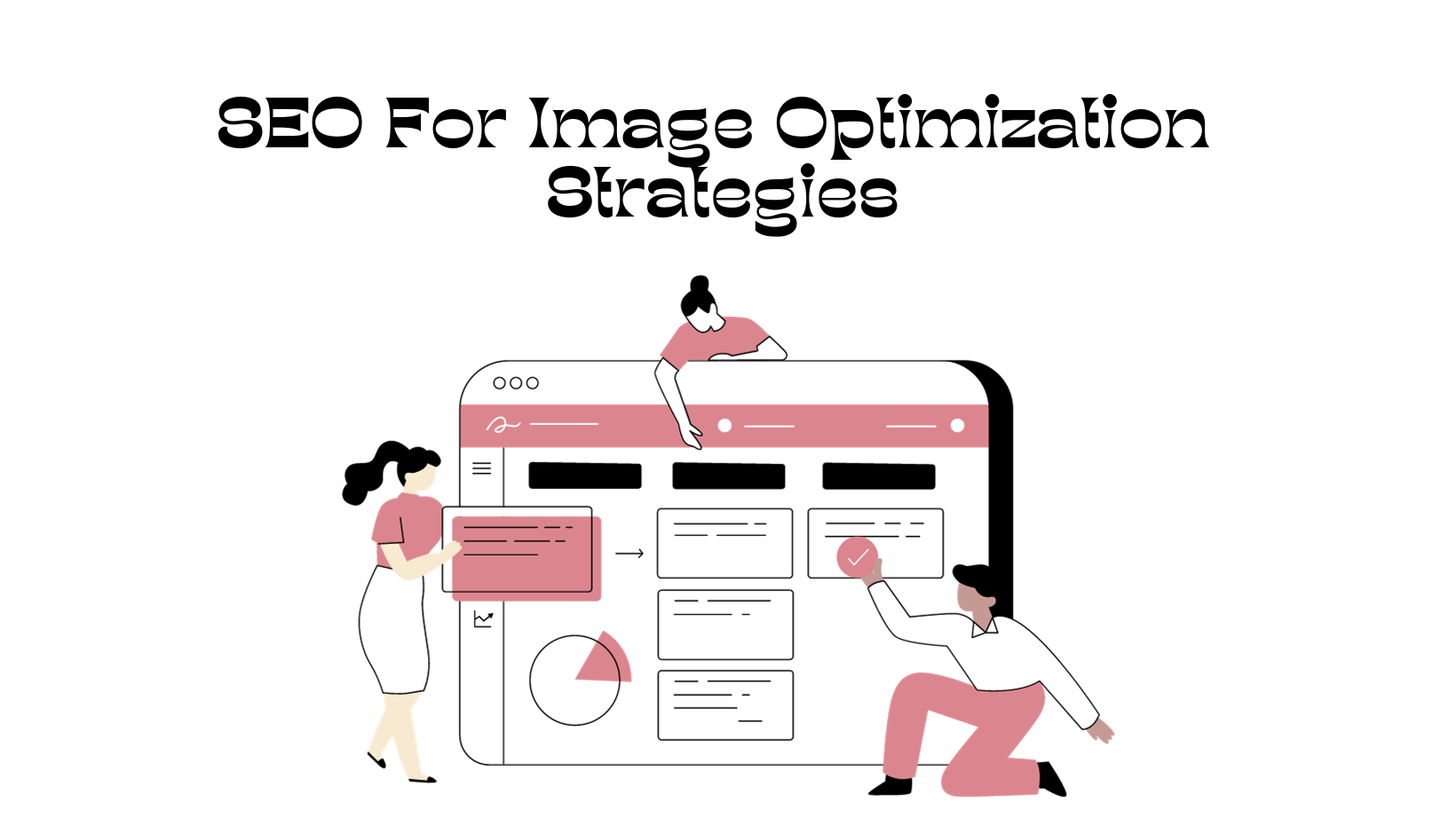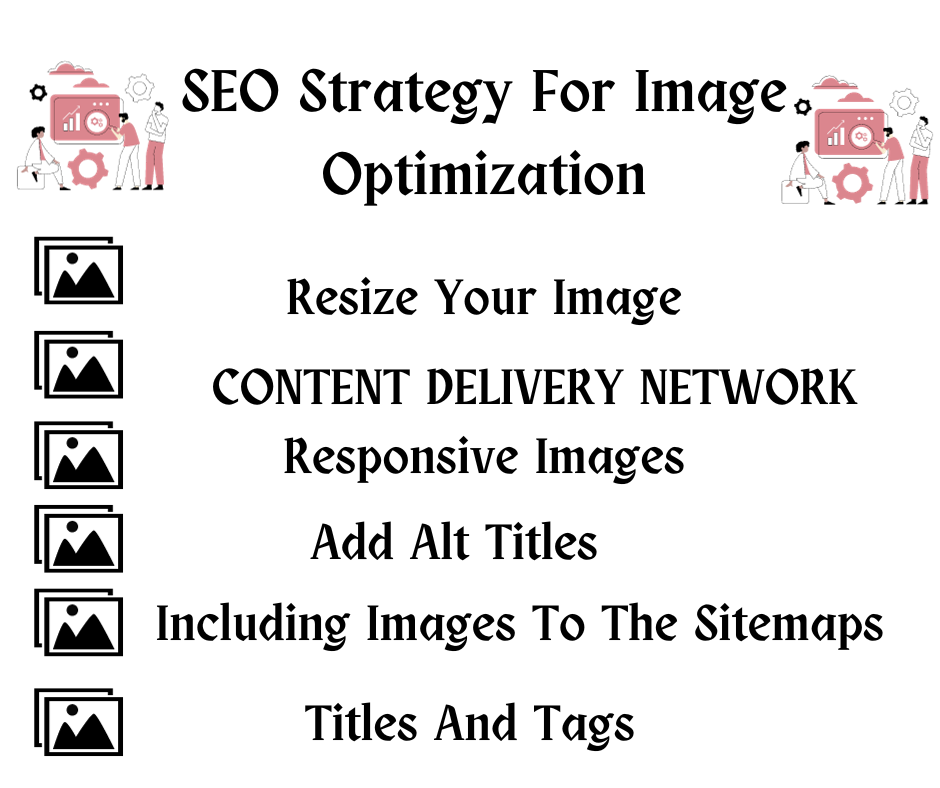When it comes to optimizing images for search engines, there are a variety of factors that can impact your ranking. An effective SEO strategy for images involves ensuring that your images are properly prepared for search engine crawlers.
This can include optimizing alt text descriptions, ensuring high image quality, and optimizing loading times. In this article, we will discuss importance of SEO for images and explore various optimization strategies that can help boost your search engine ranking.

Page Contents:
What Is Image Optimization?
Image optimization is a crucial aspect of website design and development. It involves improving the quality of images on a web page to ensure that they are visually appealing and engaging. To achieve this, images must be properly sized, formatted, and have the right resolution.
Furthermore, labelling images with meta tags and alt tags is essential for optimizing them for search engines. Meta tags provide search engines with information about the image, such as its title and description, while alt tags provide alternative text that appears when an image cannot be displayed.
Effective image optimization is also responsible for improving website load times, which is a crucial factor in keeping visitors engaged. Slow loading times can lead to a higher bounce rate and decreased user satisfaction.
SEO Strategy For Image Optimization
Image optimization is a critical component that enhances user experience, improves search engine visibility, and helps to maintain visitor engagement. SEO is strategy changes daily but image optimization remains the same. here is the step by step strategy for image optimization.
Resize Your Image
One important factor to consider for image is the size and resolution of the images you use. Image size refers to the physical dimensions of an image, measured in pixels. For example, a 5.6-megapixel image may have dimensions of 2896 x 1944 pixels.
It’s important to note that image size is often mistaken for file size. File size, on the other hand, refers to the amount of space an image takes up in memory. This is directly influenced by the image’s resolution and quality. Larger image sizes typically result in larger file sizes, which can slow down your website’s loading speed.
It’s important to resize your images to an appropriate size. This can be achieved through compression, which reduces the file size of your images without significantly affecting image quality.
It’s worth noting that there are several different compression methods available. Some methods are lossless, meaning that no image quality is lost in the compression process. Others are lossy, meaning that some image quality is sacrificed in exchange for a smaller file size.
The best compression method for your images will depend on your specific needs and preferences. However, by resizing and compressing your images appropriately, you can significantly improve your website’s loading speed and user experience. the ideal image size is between 1500 x 250o pixels.
Responsive Images
In web design, responsive image design refers to the practice of optimizing images to be able to adapt their resolution to match the screen size of the device that the user is using to view them. This means that a responsive image can be viewed on any device, whether it is a desktop computer, a tablet, or a smartphone, and still retain its quality and clarity.
In today’s digital era, where there are different screen sizes and devices, it is essential to have responsive images. This ensures that the user’s experience is not compromised when viewing your website.
Additionally, it can help to improve your website’s search engine optimization (SEO) as search engines generally rank mobile-friendly websites higher.
using responsive image design in web development is an effective way to optimize the user experience and improve SEO, as it ensures that images are clear and sharp on any device, making it easier for users to access and navigate your website.
Add Alt Titles
Alternative text, also known as alt text, is an attribute added to an image tag in HTML. Its main purpose is to provide a textual description of the image, which is then displayed in place of the image if the image cannot be loaded.
Alt text plays a vital role in search engine optimization (SEO) as it helps search engine crawlers understand the context and content of the image.
Alt text also serves an important purpose for individuals with visual impairments. Screen readers, which convert digital text into synthesized speech, use alt text to describe images to the user.
By providing a clear and concise description of the image, alt text helps visually impaired users to understand the content of the web page.
Moreover, alt text contributes to better indexing and ranking of the web page. When search engine crawlers understand the context and content of the image, they can better index the page and rank it higher in search results. This can lead to increased visibility and traffic to the website.
Alt text is an essential aspect of image optimization, web accessibility, and SEO. By providing a descriptive and concise text alternative to images, alt text helps improve the user experience for all users, including those with visual impairments, while also improving the website’s search engine ranking.
Including Images To The Sitemaps
Images play a crucial role in enhancing the overall appeal of your website. However, not all images are equally important with respective to the content.
There may be many images present on your website, but only a few of them must be related to the content. The rest of them may be purely decorative and not relevant to the content of your website.
To ensure that search engines prioritize the important images, sitemaps can be used as a guide manual for search engine crawlers. By highlighting the images that are of top priority, sitemaps can ensure that search engines crawl and index them more efficiently.
It’s also important to pay special attention to images that are only accessible through JavaScript. Such images need to be given special consideration to ensure that they get indexed.
The best ways to make sure that all the important images are indexed is to add them to the sitemap and submit them to search engines. This approach can help search engines identify the images that need to be prioritized and indexed.
CDN For Images
Content distribution systems have evolved over the years to offer various features and benefits beyond just distributing content. One such feature is the image content distribution network (CDN). An image CDN is a content delivery network that specializes in optimizing, processing, and delivering images efficiently.
Image CDNs use several techniques to optimize images automatically. One of the most important techniques is selecting the most effective format for an image. An image CDN can automatically determine the best format for an image depending on the device and the user’s location.
For example, it can convert images to next-generation formats like WebP, which offer similar quality to JPEG and PNG formats but with smaller file sizes, resulting in faster load times and reduced bandwidth usage.

Another technique used by image CDNs is image compression. An image CDN can detect the size of an image and compress it to the ideal size for faster loading times. It can also compress images based on the user’s device and network connection to ensure optimal performance.
Image CDNs also have a dynamic feature that automatically serves responsive designs of images. This feature adjusts the size, quality, and resolution of images based on the device’s screen size, making them ideal for mobile devices and different screen sizes. This feature makes image CDNs a very effective SEO strategy.
Image CDNs offer several benefits such as automatic image optimization, compression, and responsive design. These features make image CDNs an efficient and effective tool for content distribution and SEO.
Titles And Tags
It’s important to keep in mind that search engines’ crawlers can’t “see” images in the same way that humans can. Instead, they rely on text-based data such as file names and titles to understand what an image is about.
Therefore, it is essential to create descriptive and optimized titles and page tags for your images. You can achieve this by using relevant keywords in your title tags and image file names. This helps search engines recognize your content faster and improves your chances of ranking higher in search results.
In addition to titles and file names, you can also use meta-descriptions and captions to provide more context about your images. A meta-description is a summary of your page’s content that appears in search engine results.
Including relevant keywords in your meta description can help improve your page’s ranking and visibility. Captions, on the other hand, are text-based descriptions that appear directly beneath your images. They can help provide additional details about your image’s content and improve user engagement.
Creating descriptive and optimized titles, file names, meta-descriptions, and captions can help improve your content’s visibility and ranking in search engine results. By understanding how search engines interpret images, you can ensure that your content is easily discoverable and accessible to a wider audience.
